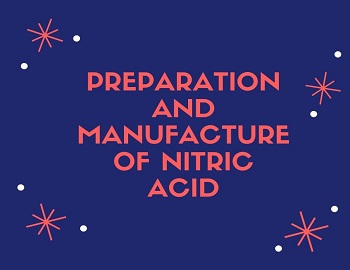Atomic Mass Unit:
An atom is the smallest particle that can take part in a chemical reaction. It is so small and so light that it cannot be weighed by any laboratory balance. For instance, the masses of hydrogen, oxygen and silver atoms are 0.1673 X 10-23 g, 2.657 X 10-23 g and 17.9 X 10-23 g, respectively. This indicates that gram is too big a unit to weigh an atom and hence to express the weight of an atom in gram is unreasonable. It has, however, been found convenient to express the masses of atoms in terms of a special unit called the atomic mass unit.
To express the masses of atoms conveniently, hydrogen, the lightest of all elements, was selected as the standard and it was given the atomic mass equal to unity. Atomic masses of other elements indicated how many times their one atom was heavier than the hydrogen atom. For example- oxygen atom was found 15.88 times that of the hydrogen atom. For certain reasons (example- oxygen combines with the largest number of elements), oxygen was found to be much more convenient element as a standard than hydrogen. The atomic mass of oxygen was fixed at exactly 16. Now as naturally occurring oxygen consists of three isotopes (mass numbers 16, 17, 18), the average value for the atomic mass of oxygen was taken as 16.0044 on the physical scale. To overcome any difficulty arising out of this duality, the International Union of Pure and Applied Chemistry and the International Union of Pure and Applied Physics decided, in 1961 to take lighter of the two naturally occurring isotopes of carbon as the standard of mass. This isotope of carbon has been assigned a value of exactly 12 atomic mass units (a.m.u) and is designated as 12C (or C12) or carbon-12. Thus, the present unit for expressing atomic masses of the elements is based on the isotope of carbon (12C) which has six protons and six neutrons in its nucleus. This unit called the atomic mass unit (a.m.u) is defined as 1/12 the mass of one 12C atom. The atomic mass (or the atomic weight) of an element may now be defined as the average relative mass (or weight) of its atom compared with one atom of carbon taken as 12.
The atomic masses of a few common elements are given in the following table-
| Element | Atomic Mass (a.m.u) |
|---|---|
| Hydrogen | 1.008 = 1 |
| Carbon | 12.00 |
| Nitrogen | 14.0066 = 14 |
| Oxygen | 159994 = 16 |
| Sodium | 22.9898 = 23 |
| Aluminium | 26.98 = 27 |
| Chlorine | 35.453 = 35.5 |
| Sulphur | 32.064 = 32 |
| Potassium | 39.102 = 39 |
| Calcium | 40.08 = 40 |
| Iron | 55.847 = 56 |
| Copper | 63.546 = 63.5 |
| Silver | 107.868 = 108 |
| Gold | 196.967 = 197 |
Note: For simple calculations, atomic masses are often rounded off to whole numbers.
When the atomic mass or atomic weight of an element is expressed in terms of grams, it is called gram atomic mass or gram atomic weight or simply gram atom. Thus one gram atom of an element is its atomic mass or atomic weight expressed in grams. For example-
1 gram atom of hydrogen = 1.008 grams
1 gram atom of nitrogen = 14 grams
1 gram atom of calcium = 40 grams
The number of gram atoms in a given weight of a pure element can be calculated by using the following relation-
Number of gram-atoms = Weight (grams) / Atomic Weight (grams)
For example, the number of gram-atoms in 80 grams of calcium = 80 grams / 40 grams = 2
- Human Genome Project
- Homologous Analogous And Vestigial Organs
- Lamarckism And Neo-Lamarckism
- Darwinism or Theory of Natural Selection
- Constituents of Food: Carbohydrates, Proteins, Fats & Vitamins
- Asexual Reproduction- Types, Characteristics And Significance
- Vegetative Propagation: Natural & Artificial Methods
- Asexual & Sexual Reproduction in Plants from Tamil Board Book









Comments (No)